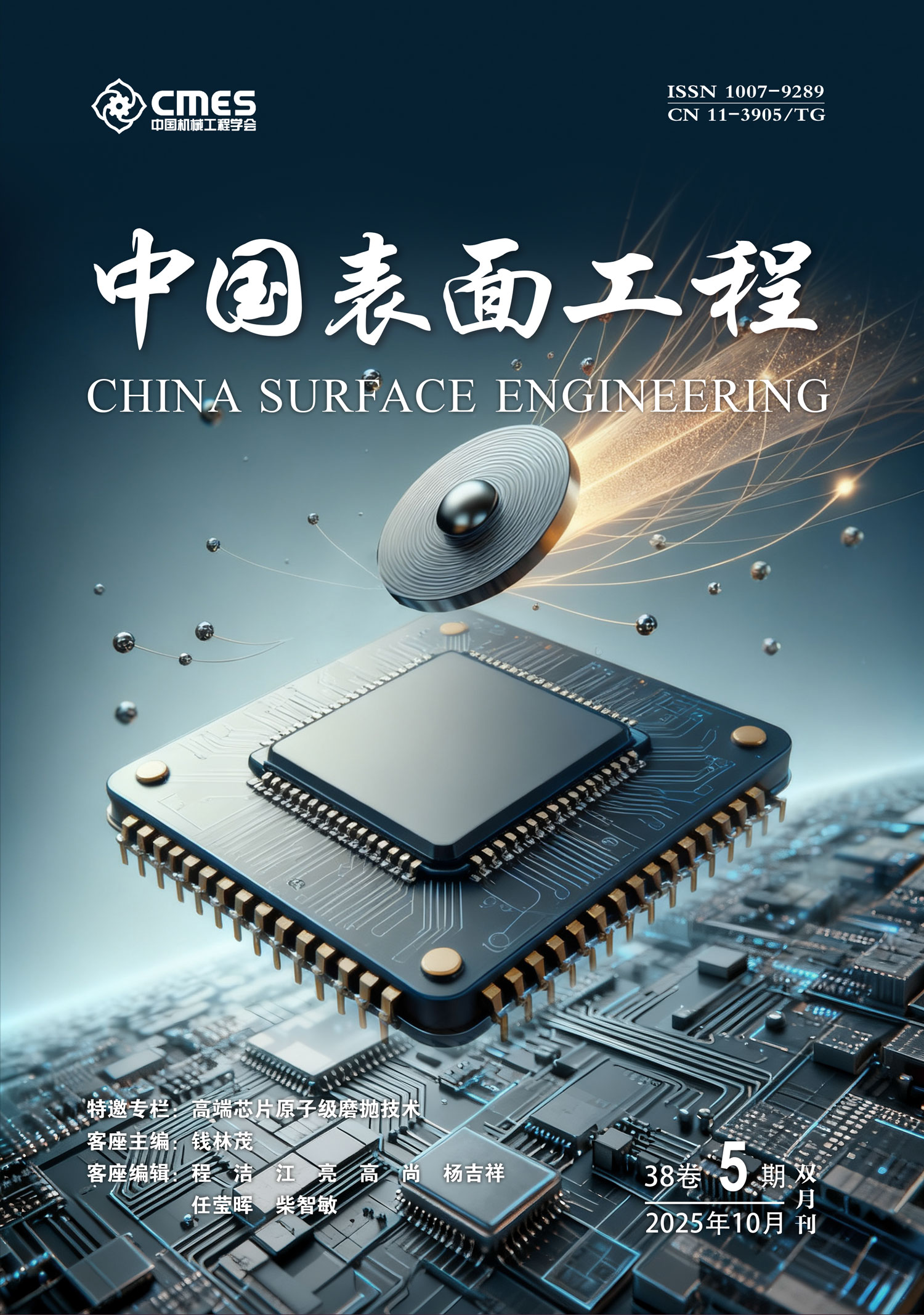TIAN Zhuangzhi, BAN Xinxing, BA Wenlan, ZHU Jianhui, WANG Ningchang, HUI Zhen, LI Zhengxin
Single-crystal silicon carbide (SiC), as a wide-bandgap semiconductor material with excellent properties, is widely used in high-power electronic devices and optoelectronic fields. However, its high brittleness, extreme hardness, and strong chemical inertness pose significant challenges for achieving efficient and low-damage polishing. Chemical mechanical polishing (CMP) cannot meet industrial efficiency requirements owing to its slow reaction kinetics. Therefore, this study introduces ultrasonic vibration into the photocatalytic chemical mechanical polishing (PCMP) method to investigate the synergistic enhancement mechanism of ultrasonic-assisted photocatalysis and the material removal mechanism under multi-energy field interactions, with the aim of advancing the development of multi-energy field collaborative polishing technology. Three different experiments were designed to evaluate the effects of ultrasonic frequencies (0, 22, 25, 28, and 40 kHz) on the chemical and mechanical performance. This study combined photocatalytic oxidation with ultrasonic vibration, using nano-TiO₂ as a catalyst under UV irradiation to induce cavitation effects. The Oxidation performance characterization tests utilized a methyl orange solution as an indicator, with the decolorization time of the polishing solution under ultrasonic-assisted photocatalytic conditions used to assess oxidative strength being shorter, indicating a stronger oxidation capability. The static corrosion tests involved immersing the SiC samples in the polishing solution for 2 h under ultrasonic-assisted photocatalytic conditions. The resulting oxide layers were quantified using scanning electron microscopy and X-ray photoelectron spectroscopy. Ultrasonic-assisted PCMP experiments were conducted using SiO₂ abrasive slurry for 2 h, with the material removal rates and surface roughness measured to evaluate polishing performance. At 22 kHz ultrasonic vibration, the methyl orange decolorization time was 229 s, the oxygen content on the corroded surface reached 2.94at.%, the material removal rate was 503.47 nm / h, and the surface roughness was 48.28 nm. Compared with photocatalytic oxidation alone, ultrasonic assistance reduced the decolorization time by 117.90%, increased the oxygen content by 215.96%, improved the material removal rate by 52.63%, and reduced the surface roughness by 91.30%. The electron-hole pairs generated by the photocatalyst under illumination effectively promoted the formation of highly oxidative radicals (e.g.,·OH) in the reaction environment, accelerating the formation of oxide layers. The·OH in the polishing solution oxidized the surface, forming oxide layers primarily composed of Si and C oxides, which exhibited significantly lower hardness, strength, and bonding strength compared with the original SiC surface, thereby allowing easy removal using diamond or silica abrasives. Ultrasonic vibration enhanced both the chemical oxidation and mechanical removal stages of the polishing process. During ultrasonic propagation in liquids, cavitation bubbles formed and collapsed rapidly upon reaching a critical size during the compression cycles, generating localized high-energy microenvironments with temperatures exceeding 5 000 K and pressures up to 1 000 atm. Ultrasonic effects accelerated the mass transfer among the reactants, catalysts, and radicals, reduced the diffusion resistance, rapidly removed intermediate products generated during photocatalytic reactions, prevented reaction blockage, promoted electron-hole pair separation, reduced recombination rates, increased·OH concentration, and significantly improved the photocatalytic oxidation efficiency. The collapse of the cavitation bubbles enhanced the kinetic energy of the catalysts and abrasives, increasing the contact frequency and efficiency between the workpiece, catalysts, and abrasives, thereby improving the oxidation rate and mechanical removal efficiency of SiC. Ultrasonic vibrations also promoted the uniform distribution of photocatalysts and abrasives, eliminated catalyst agglomeration, increased the reactive surface area, enhanced the photocatalytic efficiency, and improved the surface uniformity and consistency. In addition, the localized high-temperature environments generated by cavitation bubbles further enhanced the chemical reactions. Notably, lower ultrasonic frequencies exhibited stronger cavitation effects, significantly improving the efficiency of ultrasonic-assisted PCMP. Owing to the synergistic effects of ultrasonic vibration, photocatalysis, and mechanical forces, the wear characteristics of the surface were significantly different from those after traditional grinding and polishing. Ultrasonic action improves the fracture toughness, facilitates plastic removal, and reduces subsurface damage. Therefore, integrating ultrasonic vibration into PCMP enhances the photocatalytic activity and abrasive kinetic energy, increases the oxidation rates and removal efficiency, and enables more efficient polishing of single-crystal SiC.

